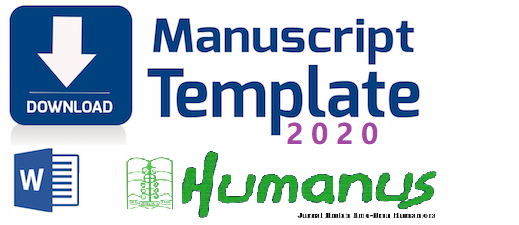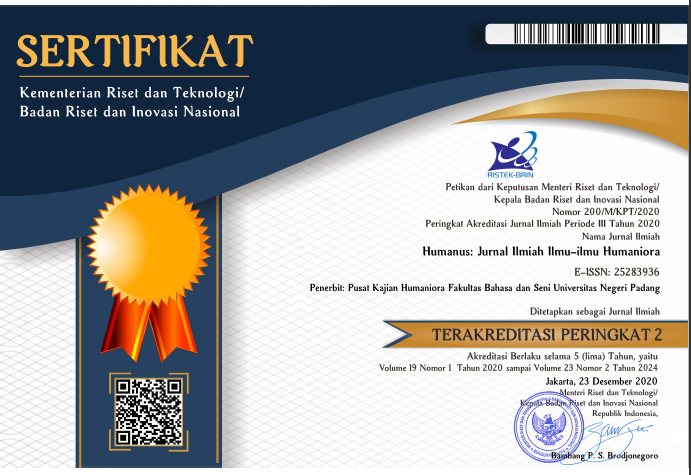FORM SHIFTS IN TRANSLATING PASSIVE CLAUSES FOUND IN NOVEL HARRY POTTER: HARRY POTTER AND THE DEATHLY HALLOWS
 ), Jufrizal Jufrizal(2), M Yusdi(3),
), Jufrizal Jufrizal(2), M Yusdi(3), (1) Universitas Andalas
(2) FBS Universitas Negeri Padang
(3) Universitas Andalas
 Corresponding Author
Corresponding Author
Copyright (c) 2019 Humanus
DOI : https://doi.org/10.24036/humanus.v18i2.104342
Full Text:
 Language : en
Language : en
Abstract
Keywords
References
Akbari, M. (2012). Structural shifts in translation of children’s literature. International journal of linguistics, 4(2), 576-594.
Alwi, H., Darmowidjojo, S, Lapoliwa, H, Moeliono, A. (1998). Tata bahasa baku: Bahasa Indonesia. Jakarta: Balai Pustaka.
Ardi, H. (2016). The impact of translation techniques toward the quality of translation: A case study on a social text. Humanus: Jurnal Ilmiah Ilmu-ilmu Humaniora 15 (2), 142-153.
Catford, J. C. (1965). A linguistic theory of translation. London: Oxford University Press.
Cyrus, L. (2009). Old concepts, new ideas: Approaches to translation shifts. MonTI. Monografías de Traducción e Interpretación, (1), 87-106.
Choliludin. (2006). The Technique of Making Idiomatic Translation. Bekasi: Kesaint Blanc.
House, J. (2015). Translation quality assessment past and present. New York: Routledge.
Hosseini-Maasoum, S. M., & Shahbaiki, A. (2013). Translation shifts in the Persian translation of a tale of two cities by Charles Dickens. Academic Journal of Interdisciplinary Studies, 2(1), 391.
Larson, M. L. (1984). Meaning-based translation a guide to cross-language equivalence. Lanham: University Press of America.
Mobarakeh, M. D., & Sardareh, S. A. (2016). The effect of translation shifts on the level of readability of two Persian translations of novel "1984" by George Orwell. International Journal of Humanities and Cultural Studies (IJHCS) ISSN 2356-5926, 1418-1427.
Newmark, P. (1988). Approaches to translation. London: Prentice-Hall.
Nida, E. A., & Taber, C.R. (1974). The theory and practice of translation. Leiden: E.J.Brill.
Osimo, B. (2008). Meaning in translation: A model based on translation shifts. Linguistica Antverpiensia, New series–Themes in translation studies, (7).
Serbina, T., Hintzen, S., Niemietz, P., & Neumann, S. (2017). Changes of word-class during translation–Insights from a combined analysis of corpus, keystroke logging, and eye-tracking data. Empirical modelling of translation and interpreting, 7, 177.
Tianmin, J. (2006). Translation in context. Translation Journal. Volume 10. No. 2. April 2006. http://accurapid.com/journal/36context.htm. Last updated on 03/21/2006.
Zupan, S. (2006). Repetition and translation shifts. ELOPE: English Language Overseas Perspectives and Enquiries, 3(1-2), 257-268.
 Article Metrics
Article Metrics
 Abstract Views : 807 times
Abstract Views : 807 times
 PDF Downloaded : 214 times
PDF Downloaded : 214 times
Refbacks
- There are currently no refbacks.
Copyright (c) 2019 Humanus

This work is licensed under a Creative Commons Attribution-NonCommercial 4.0 International License.










